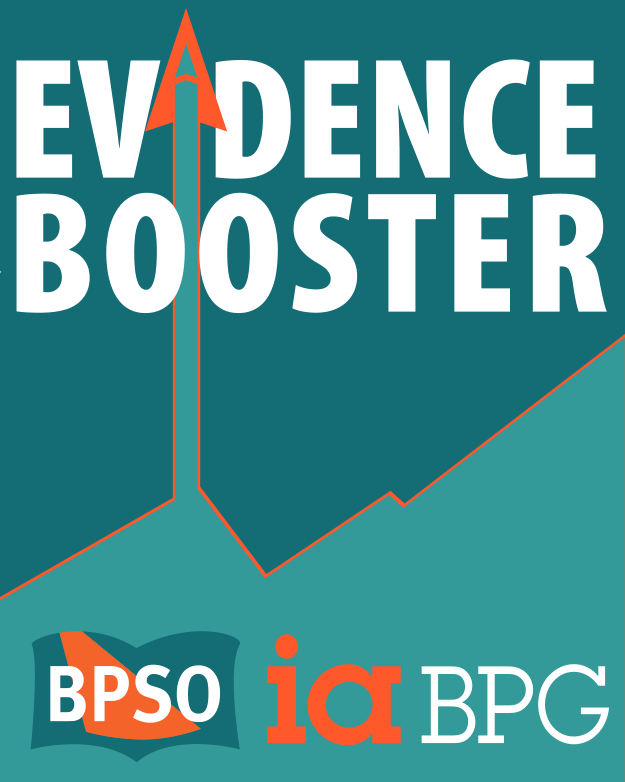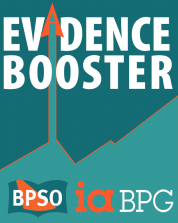
Evidence Boosters
RNAO Evidence Boosters are two-page infographics that demonstrate the impact of evidence-based practice implementation using Nursing Quality Indicators for Reporting and Evaluation® (NQuIRE®) data. They showcase Best Practice Spotlight Organization® success stories on implementation strategies, practice and policy changes, and health outcomes.
Evidence Boosters allow organizations to share implementation and evaluation information with executives, managers and front-line staff to highlight the effects of best practice guidelines using NQuIRE data.
This Evidence Booster examines the impact of implementing RNAO’s Risk Assessment and Prevention of Pressure Ulcers (2011) best practice guideline (BPG) in five long-term care homes in Peel Region, Ontario, Canada.
This Evidence Booster examines the impact of implementing RNAO’s Risk Assessment and Prevention of Pressure Ulcers (2011) and Assessment and Management of Pressure Injuries for the Interprofessional Team (2016) best practice guidelines (BPGs) in a long-term care setting in Ottawa, Ontario.
This Evidence Booster examines the impact of implementing RNAO’s Person- and Family-Centred Care (2015) best practice guideline (BPG) in a long-term care home in Richmond Hill, Ontario.
Mackenzie Health LTC Home maintained consistency in residents’ participation and satisfaction with their involvement in the planning and development of their personalized care. Implementing the BPG led to a decrease in the rate of complaints.
This Evidence Booster examines the impact of implementing RNAO’s Assessment and Management of Foot Ulcers for People with Diabetes (2013) best practice guideline at one of Canada’s largest providers of home care and specialized community services in Ottawa, Ontario.
This Evidence Booster examines the impact of implementing RNAO’s Person- and Family-Centred Care (2015) best practice guideline (BPG) in a rehabilitation and complex continuing care hospital in Toronto, Ontario.
Runnymede Healthcare Centre demonstrated an increase in the percentage of persons satisfied with their involvement in the planning of care and treatment. Post-implementation, a higher percentage of people also participated in developing their personalized plan of care.
This Evidence Booster examines the impact of implementing RNAO’s best practice guidelines in an academic institution in Doha, Qatar.
The University of Calgary in Qatar successfully integrated the BPGs into its concept and competency-based curriculum, significantly enhancing students’ skills and knowledge. This work has cultivated an evidence-based culture and promoted advocacy for excellence in health care.
This Evidence Booster examines the impact of implementing RNAO’s Risk Assessment and Prevention of Pressure Ulcers (2011) best practice guideline (BPG) in a pediatric hospital in Santiago, Chile.
Hospital de Niños Dr. Luis Calvo Mackenna demonstrated an increase in the percentage of persons identified as “at risk for pressure ulcer” who have a documented use of an appropriate pressure management surface, and a decrease in the percentage of persons who developed one or more new stage II to IV pressure ulcers.
Este soporte a la evidencia examina el impacto de la implementación de la guía de buenas practicas de Evaluación de riesgos y prevención de úlceras por presión (2011) de RNAO en un hospital pediátrico de Santiago de Chile.
El Hospital de Niños Dr. Luis Calvo Mackenna demostró un aumento en el porcentaje de personas identificadas como "en riesgo de sufrir úlceras por presión" donde se tiene un registro documentado de una superficie adecuada y una disminución en el porcentaje de personas que desarrollaron una o más nuevas úlceras por presión en etapa de II a IV.
This Evidence Booster examines the impact of implementing RNAO’s Preventing Falls and Reducing Injury from Falls (2017) best practice guideline in one Ontario long-term care (LTC) home.
This Evidence Booster examines the impact of implementing RNAO’s Assessment and Management of Pressure Injuries for the Interprofessional Team (2016) best practice guideline (BPG) in a hospital in Chile, South America.
Hospital Clínico Herminda Martin – a teaching hospital – demonstrated a decrease in the rate of persons who developed a new pressure injury and an increase in the percentage of persons who received a risk assessment for developing pressure injuries.

